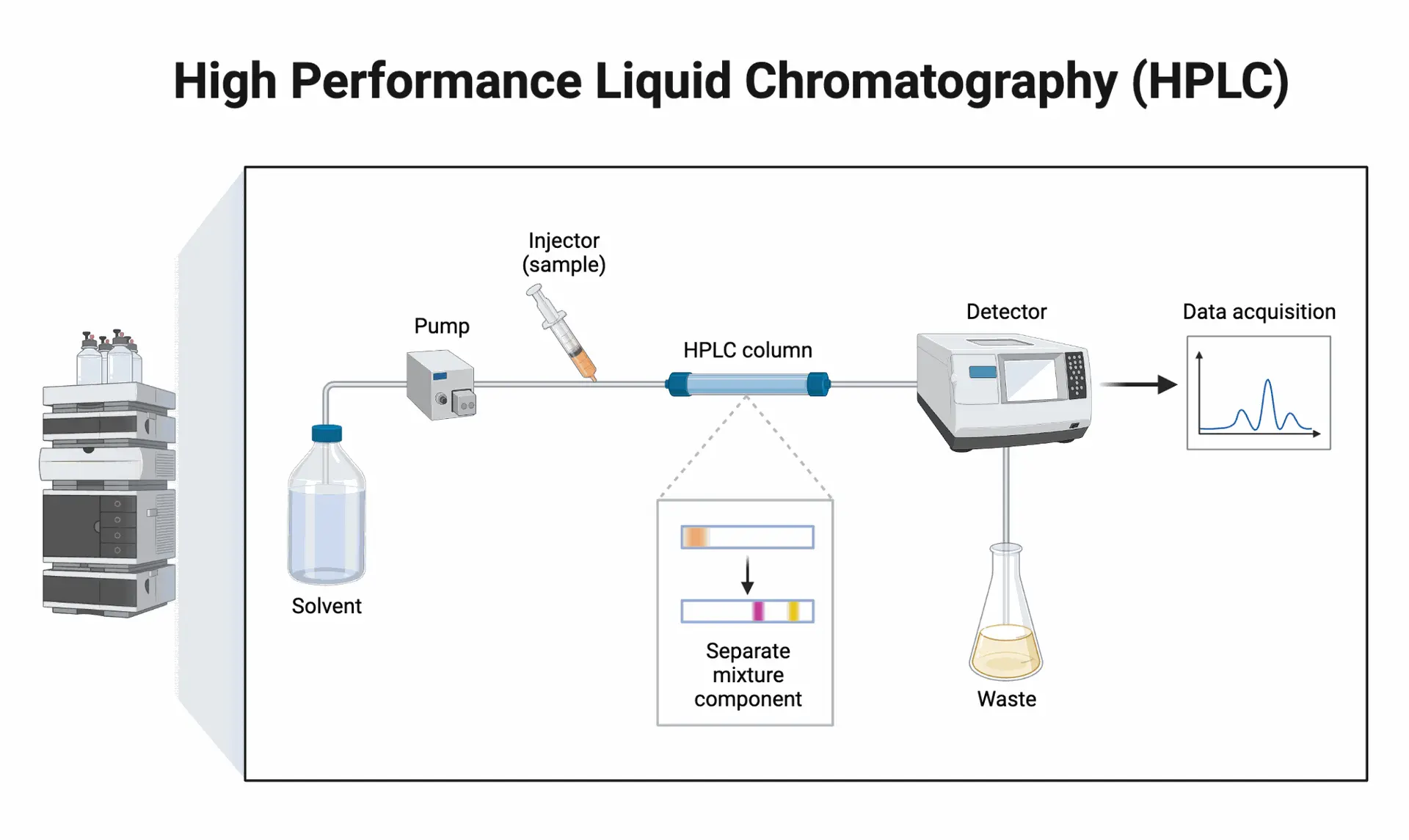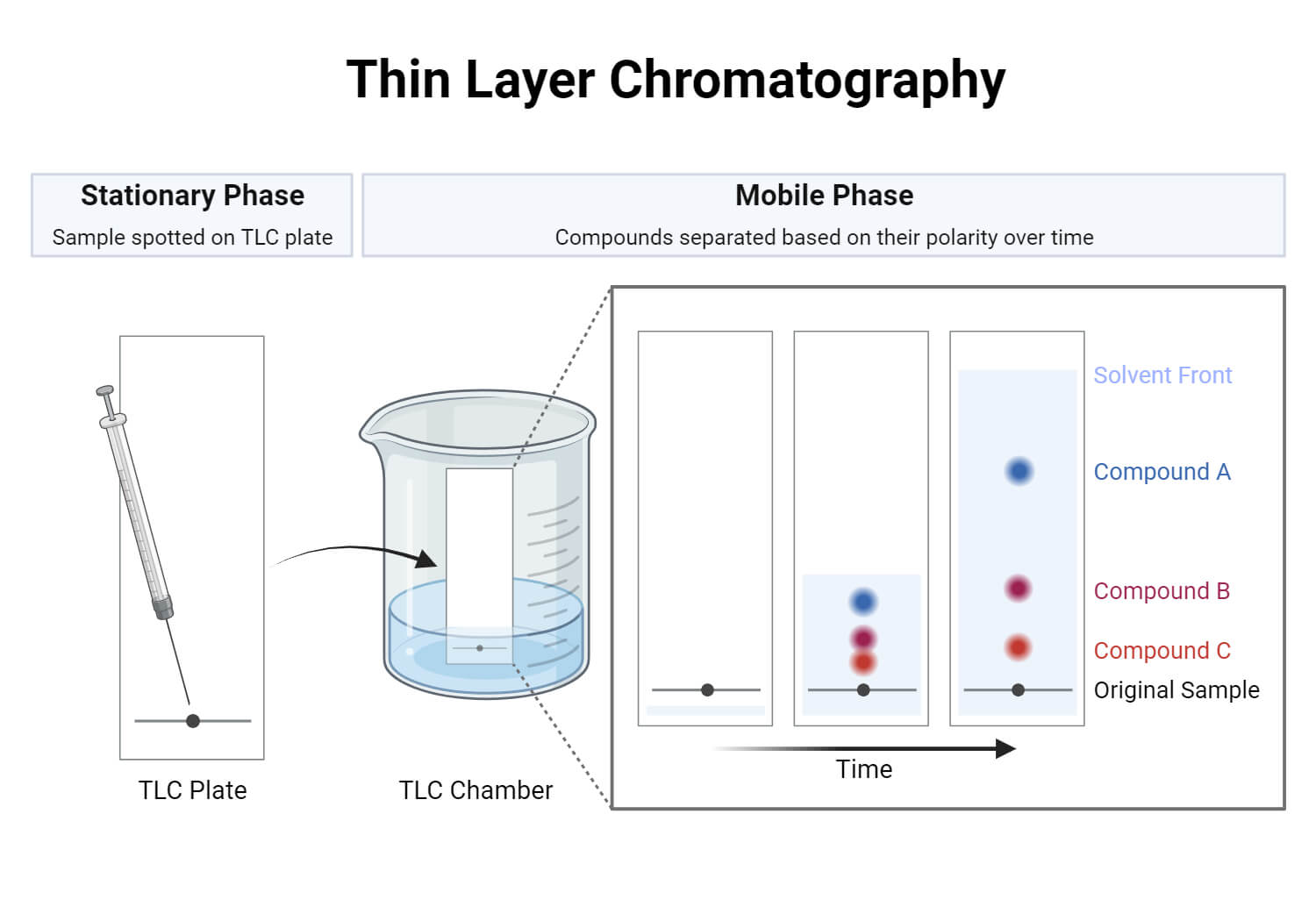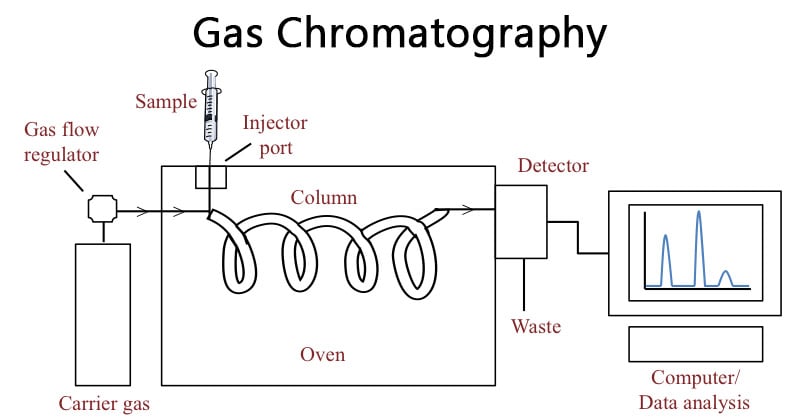Introduction
Chromatography is a fundamental technique in biotechnology, medical research, and analytical chemistry. It allows scientists to separate, identify, and quantify components in complex mixtures, making it indispensable in laboratories worldwide. Whether you are working in pharmaceuticals, clinical research, or biotechnology, understanding chromatography methods is crucial. This blog explores three widely used techniques: High-Performance Liquid Chromatography (HPLC), Thin-Layer Chromatography (TLC), and Gas Chromatography (GC), their applications, advantages, and tips for laboratory practice.
What is Chromatography?
Chromatography is a separation technique based on the differential distribution of components between a stationary phase and a mobile phase. Depending on the chemical properties of the sample, compounds move at different speeds, allowing their separation Read more . This principle is applied across multiple chromatography methods:
Liquid chromatography (HPLC) Read more

Thin-layer chromatography (TLC) Read more
- Gas chromatography (GC) Read more
Each method offers unique advantages, making it suitable for specific laboratory needs.
High-Performance Liquid Chromatography (HPLC)
HPLC is one of the most powerful and widely used chromatography techniques in modern laboratories. It is especially essential for pharmaceutical analysis, biochemistry, and clinical research. Read more
 How HPLC Works
How HPLC Works
HPLC uses a liquid mobile phase to pass a sample through a column packed with a stationary phase. Components separate based on polarity, size, or affinity for the stationary phase. Detectors such as UV-Vis or fluorescence are used to identify and quantify the analytes.
Applications of HPLC
Pharmaceutical analysis: Quality control of drugs, detection of impurities
Clinical research: Measuring biomarkers in blood or urine
Biotechnology: Protein purification, enzyme analysis
Environmental analysis: Detecting pollutants in water or soil
Advantages of HPLC
High resolution and sensitivity
Quantitative and reproducible results
Suitable for complex mixtures
Thin-Layer Chromatography (TLC)
TLC is a simple and cost-effective chromatography method widely used for preliminary analysis and quality control.
How TLC Works
In TLC, a sample is applied on a thin layer of adsorbent (usually silica gel) coated on a plate. The plate is placed in a solvent chamber, and the solvent moves upward by capillary action. Compounds separate based on their affinity for the stationary phase versus the solvent.
Applications of TLC
Pharmaceutical testing: Identifying drug components
Biochemistry: Detecting amino acids, lipids, or small molecules
Food industry: Checking purity and detecting additives
Environmental studies: Rapid screening for pollutants
Advantages of TLC
Low cost and minimal equipment
Quick and easy setup
Visual detection using UV light or chemical stains
Gas Chromatography (GC)
GC is ideal for separating volatile and thermally stable compounds. It is widely used in analytical chemistry, environmental science, and forensics.
How GC Works
GC uses a gas mobile phase, often helium or nitrogen, to pass a vaporized sample through a column coated with a stationary phase. Compounds are separated based on volatility and interaction with the stationary phase, then detected by instruments like FID (Flame Ionization Detector) or MS (Mass Spectrometry).
Applications of GC
Environmental analysis: Detecting pesticides, pollutants, or toxins
Pharmaceutical industry: Analyzing volatile drugs and impurities
Food safety: Detecting flavors, additives, and contaminants
Forensic science: Identifying substances in criminal investigations
Advantages of GC
High sensitivity and precision
Ideal for volatile compounds
Fast and reliable separation
Choosing the Right Chromatography Technique
Selecting the appropriate chromatography method depends on:
Nature of the sample liquid, solid, or volatile
Complexity of the mixture simple screening (TLC) vs. high-resolution analysis (HPLC/GC)
Detection requirements qualitative vs. quantitative analysis
Available laboratory equipment and budget
For laboratories in biotechnology, clinical diagnostics, or pharmaceutical research, having access to HPLC, TLC, and GC equipment ensures flexibility and precision in all analyses.
Essential Reagents and Equipment for Chromatography
Successful chromatography requires high-quality reagents and consumables, including:
HPLC columns and solvents (acetonitrile, methanol, water)
TLC plates and developing solvents
GC columns and carrier gases (helium, nitrogen)
Detectors and calibration standards
At [Your Website Name], we provide premium chromatography reagents, consumables, and laboratory equipment suitable for research in biology, biotechnology, and medical sciences.
Conclusion
Chromatography is the backbone of modern laboratory analysis, offering unmatched precision and versatility. HPLC, TLC, and GC each serve unique purposes, from routine screening to high-precision research. Whether you are analyzing pharmaceuticals, biological samples, or environmental pollutants, choosing the right chromatography technique and using high-quality reagents is essential for accurate and reproducible results.
Invest in the best chromatography equipment and reagents to accelerate your research and maintain high standards in your laboratory.

